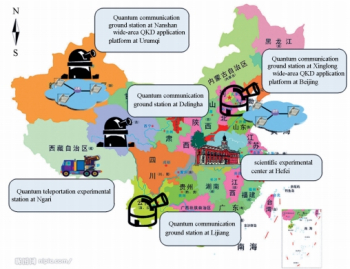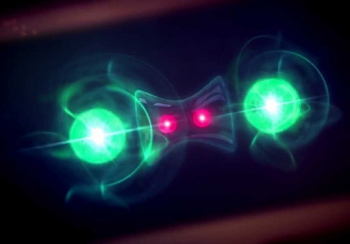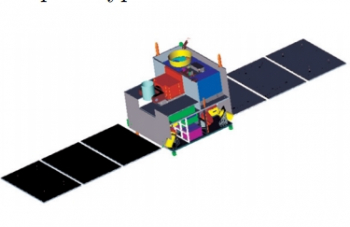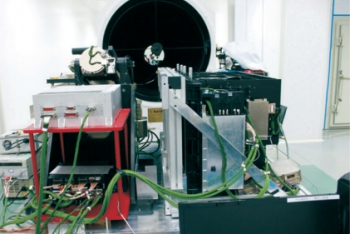Long March 2D launches world’s first quantum communications satellite
August 15, 2016 by Rui C. Barbosa
The Chinese have launched the first satellite that can achieve quantum communications between space and Earth. The launch of the Quantum Science Satellite – called Mozi – took place at 17:40 UTC on Monday using a Long March-2D (Chang Zheng-2D) launch vehicle from the 603 Launch Pad of the LC43 complex at the Jiuquan space center.
Chinese Launch:
The new satellite is dedicated to quantum science experiments. The Quantum Space Satellite, (or Quantum Experiments at Space Scale) will test the phenomena of quantum entanglement.
Operated by the China Academy of Sciences, this 500 kg satellite – announced as the name “Mozi” in honor of a fifth century BC Chinese scientist – contains a quantum key communicator, quantum entanglement emitter, entanglement source, processing unit, and a laser communicator.
QUESS will relay transmissions between two ground stations (one in China, and the other in Europe) transmitting quantum keys.
During the mission, Chinese scientists will implement a series of science missions between the satellite and quantum communication ground stations.
QSS will operate on a Sun-synchronous circular orbit with an altitude of 600 km.
One of the major objectives of the mission is to set a Quantum Key Distribution from satellite to ground, setting an ultra-long-range quantum channel between ground and satellite with the assistance of high-precision acquisition, tracking and pointing system, implement a quantum key distribution between the satellite and the ground stations, and carry out unconditional secure quantum communication experiments.
The mission will also create a global-scale quantum communication network, establishing a real wide-area network for quantum communication using the satellite repeater and two arbitrary quantum ground stations and their auxiliary local-area fiber quantum networks.
It will also test the Quantum Entanglement Distribution from satellite to two ground stations in China and in Europe, creating a real wide-area network for quantum communication using the satellite repeater and two arbitrary quantum ground stations and their auxiliary local-area fiber quantum networks.
The Austrian Academy of Sciences provided the optical receivers for the European ground stations.
Finally, the QSS plans to achieve Quantum Teleportation from ground to satellite as a totally new way of communication, quantum teleportation is the fundamental process of quantum networks and quantum computing.
A high-quality quantum entanglement source on the ground will be built to achieve ground-to-satellite teleportation experiments based on photon entanglement.
The Quantum Science Satellite consists of several different subsystems: the attitude control subsystem, power subsystem, thermal control subsystem, telemetry and command subsystem, communications subsystem, structure subsystem, and housekeeping subsystem.
In order to design the Quantum Science Satellite, the mission activities, requirements, and mission analysis have been completed at the end of 2011.
Mission definition and justification and key technique research were finalized by the end of 2012. Detailed definitions of the spacecraft were completed in March 2013.
Prototypes of on board devices and components were been built for verification and have been checked and approved at the end of August 2013. Electronic characteristic tests on the prototypes were carried out by the end of September 2013.
After that, in October 2013, the structural prototype of the satellite was assembled and the mechanical environmental simulation tests have been completed.
Subsequently, the thermal balance tests were finalized in December 2013 on the thermal characteristic prototype of the satellite.
At the end of October 2013, some prototypes of on board devices, which are designed for qualification tests, were put into production and were checked and accepted by the end of March 2014. The satellite arrived at Jiuquan on July 8, 2016.
The payload of the quantum science experimental satellite includes quantum key communicator, quantum entanglement emitter, quantum entanglement source, quantum experiment controller and processor and high-speed coherent laser communicator.
The key techniques of the optical communication terminal consist of high precision tracking and pointing, wide-band high-extinction ratio polarization-maintaining capabilities and the aviation engineering of quantum entanglement source.
Developed by the Chinese Academy of Sciences (CAS), the Quantum Science Satellite is part of China’s Strategic Priority Program on Space Science.
The first satellite of this program, a dark-matter satellite, was launched into space in December. The second, the country’s first microgravity satellite, the SJ-10, was successfully launched on April 6.
A hard X-ray telescope for black hole and neutron star studies is also expected to be launched in the second half of this year.
The launch also included a Spanish passenger in the form of a 6U CubeSat “³Cat-2” from the NanoSat lab at Universitat Politècnica de Catalunya, classed as “a novel GNSS-R payload for Earth observation”.





 Indian denial is unbelievable... Ok, you win. American satellite is more advance. No need facts and link. Based on perception.
Indian denial is unbelievable... Ok, you win. American satellite is more advance. No need facts and link. Based on perception. 
 Come 2020 after the ISS falls out from orbit, China's Tianggong 2 Space Laboratory will be the only Space Station up in space and since Americans Astronauts are not permitted to participate due to a bill introduced by shortsighted US politicians, how advance can they be then apart from reliving their past glory days of the lunar landing.
Come 2020 after the ISS falls out from orbit, China's Tianggong 2 Space Laboratory will be the only Space Station up in space and since Americans Astronauts are not permitted to participate due to a bill introduced by shortsighted US politicians, how advance can they be then apart from reliving their past glory days of the lunar landing. Perhaps they should considered sourcing it from the Chinese.
Perhaps they should considered sourcing it from the Chinese. 













